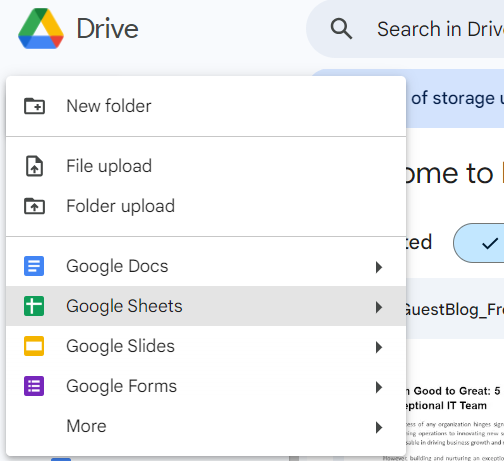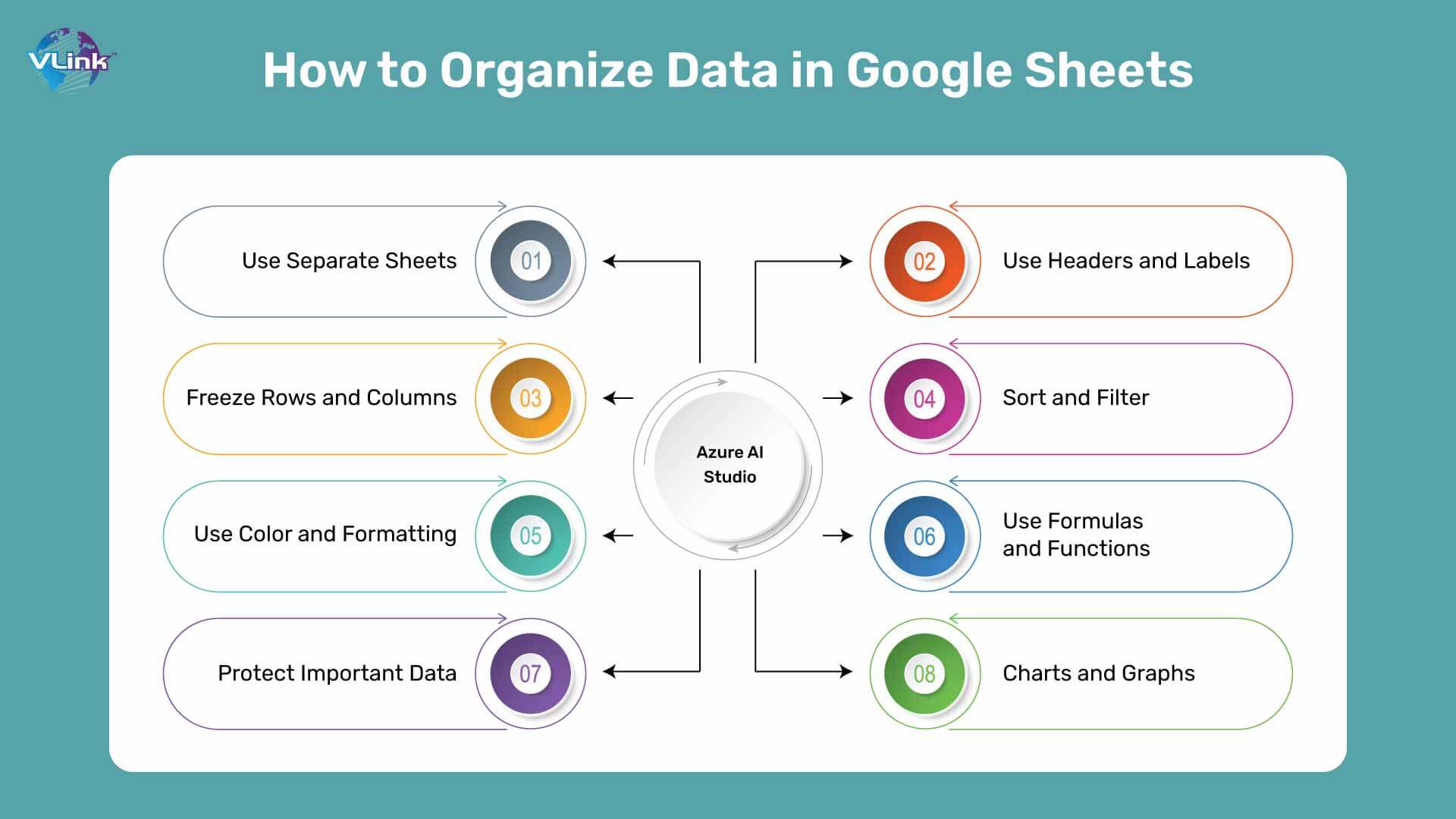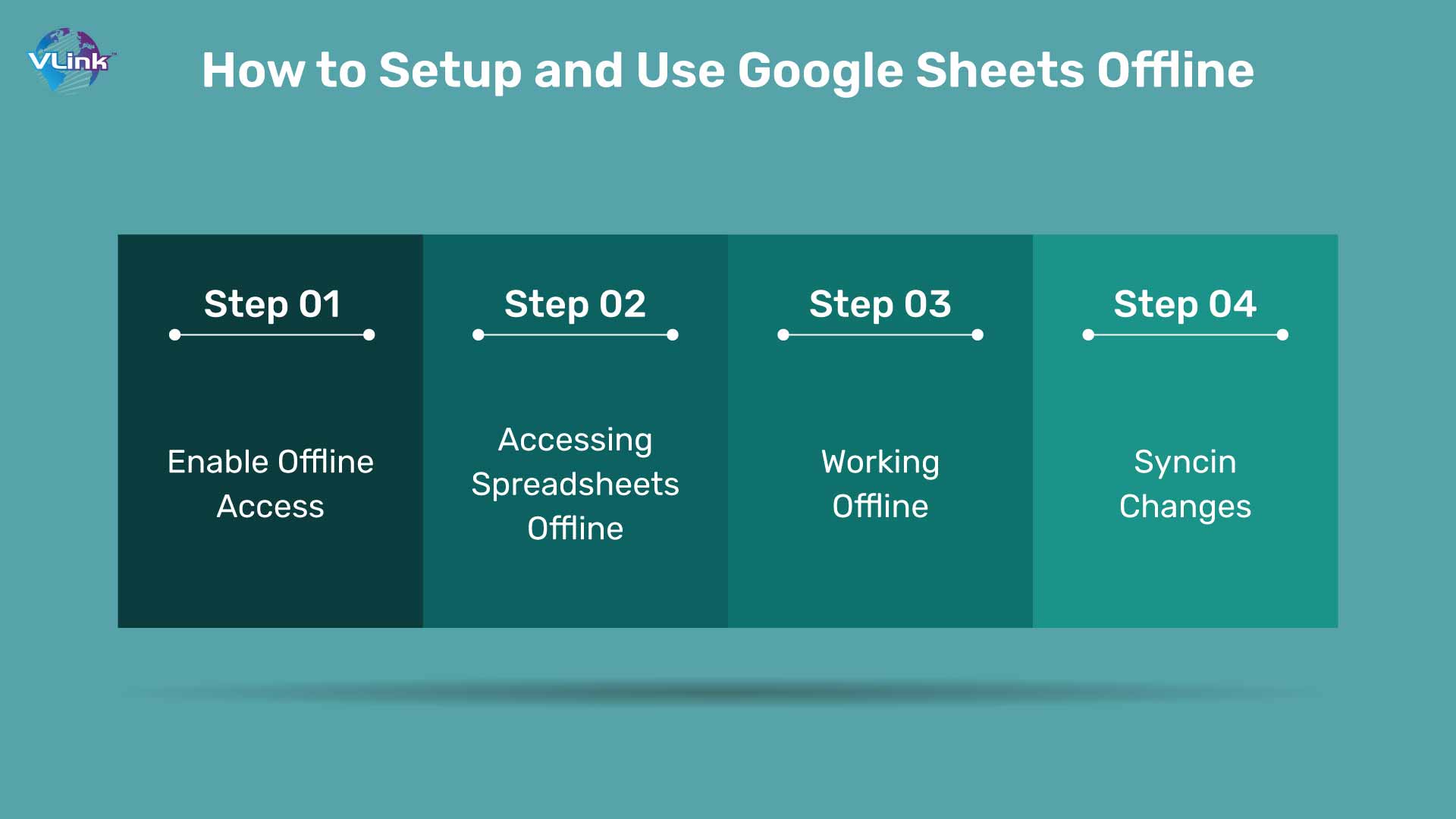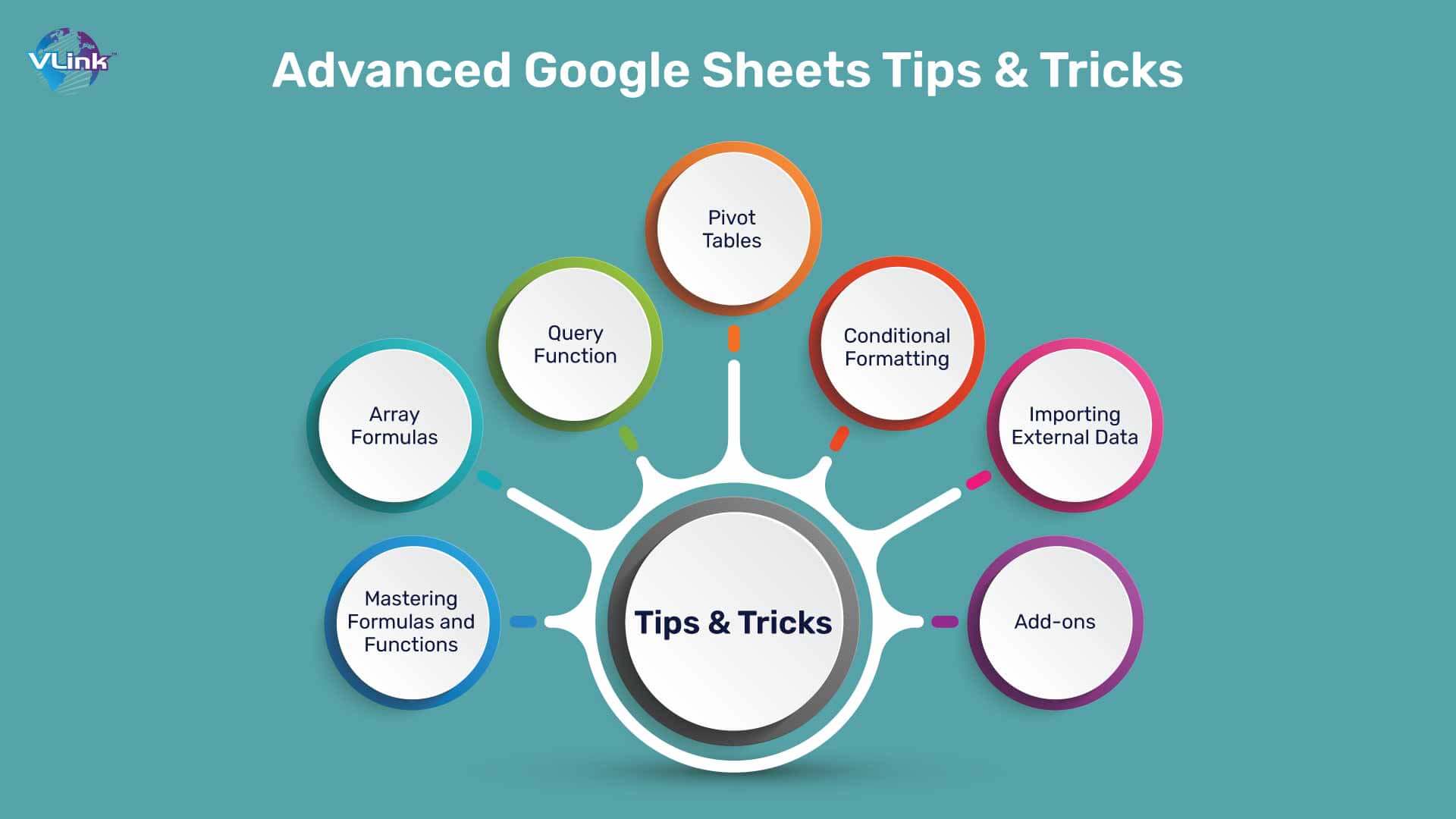Google Sheets, known for its versatility, serves as a cornerstone in organizing monthly marketing tasks through a color-coded content calendar and tracking profits for small businesses.
Its efficiency streamlines processes and enhances overall productivity. But, for beginners, mastering its several features and functionalities, particularly to create marketing reports or dashboards, can pose a challenge.
Not to worry. If you want to get started with Google Sheets, you're in the right place.
In this blog, we will explore a guide on how to use Google Sheets, go over the functional skills and benefits of automated Google Sheets and provide you with some advanced tips to help you streamline your work.
What is Google Sheet?
Google Sheets is a web-based spreadsheet program and a part of Google’s office productivity tools known as Google Workspace (formerly G Suite). It allows you to create, edit, and collaborate on spreadsheets in real time over the internet.
Like traditional spreadsheet programs, it offers features, including Microsoft Excel, including formulas, functions, charts, conditional formatting, and more. Thanks to its cloud-based nature, Google Sheets enables you to access their spreadsheets from any device with an internet connection and collaborate with others simultaneously.
How to Use Google Sheets: Get Started
Here is a complete guide on how to use Google Sheets:
What is the Google Sheets Toolbar?
The Google Sheets toolbar is a collection of tools and functions accessible at the top of the Google Sheets interface. It provides users with quick access to various features and commands for creating, formatting, and editing spreadsheets.
The toolbar includes options for tasks such as formatting cells, inserting charts and images, adding formulas and functions, sorting and filtering data, and collaborating with others. It is designed to make it easy for users to navigate and utilize the various capabilities of Google Sheets efficiently.
One of the first things you need to consider is mastering the icons situated in the Google Sheets Toolbar. It'll save you time with shortcuts.
How to Create a New Spreadsheet?
Here are four ways to create a new spreadsheet in Google Sheets:
Option 1: Click the multi-coloured "+" button on your dashboard.

Option 2: Open the menu from within a spreadsheet and select File > New > Spreadsheet.
Option 3: Click the multi-colored New button on your Google Drive dashboard and select Google Sheets > Blank spreadsheet.

Option 4: Type "sheets.new" into your browser.
Sharing and Protecting Your Data
After setting up Google Sheets, it’s time to think about how to share and protect your data. Here are a few tips you need to follow to share and protect your data in Google Sheets.
Sharing Your Google Sheet:
- Open the Google Sheet.
- Click on the "Share" button in the top-right corner of the screen.
- In the sharing dialog box, enter the email addresses of the people you want to share the sheet with.
Select access level for each person:
- Editor: You can edit the sheet.
- Viewer: You can view the sheet but cannot edit it.
- Commenter: You can add comments to the sheet but cannot edit it.
- Click on "Send" to share the sheet with the accessed one.
Protecting Your Google Sheet:
- Open the Google Sheet
- Click on the "Data" menu in the top menu bar.
- Select "Protected sheets and ranges."
- In the right panel that opens, click on "Add a sheet or range."
- Choose the sheet you want to protect or select the range of cells you want to protect.
- Click "Set permissions."
Adjust the permissions as needed:
- Restrict who can edit this range: Only specific users can edit the selected range.
- Restrict who can view this range: Only specific users can view the selected range.
- Click "Done."
Make sure users with the appropriate permissions can edit or view it.
Organize Data in Google Sheets

Here are some tips on how to effectively organize your data:
- Use Separate Sheets for Different Data Types: Consider creating separate sheets within your Google Sheets document for different types of data. For example, you might have one sheet for raw data, another for calculations or analysis, and another for visualizations.
- Use Headers and Labels: Use clear and descriptive headers for each column to label your data. It helps you and others understand what each column represents. Make sure your headers are descriptive enough to avoid confusion.
- Freeze Rows and Columns: If your dataset is large, freezing rows and columns can be helpful. It allows you to keep essential headers or labels visible as you scroll through your data.
- Sort and Filter: Utilize the sorting and filtering features to organize your data. You can sort or filter data alphabetically, numerically, or by date. Filtering allows you to display only the rows that meet specific criteria, which can be helpful for focusing on subsets of your data.
- Use Color and Formatting: Apply formatting such as color-coding to highlight important information or to differentiate between different categories of data. It can make your data more accessible to interpret.
- Use Formulas and Functions: Google Sheets offers a wide range of formulas and functions that can help you manipulate and analyze your data. Take advantage of functions like SUM, AVERAGE, COUNT, and VLOOKUP to perform calculations and retrieve specific information from your dataset.
- Protect Important Data: If you're sharing your spreadsheet with others, consider protecting specific cells or ranges to prevent accidental changes to essential data.
- Charts and Graphs: If your data lends itself to visualization, consider creating charts or graphs to help convey trends and patterns more easily.
How to Hide Data
In Google Sheets, you have the option to hide entire rows or columns. It's useful when you need to limit what others can see when sharing your spreadsheet. Or when you want to manage the amount of data visible on your screen.
To hide data on Google Sheets, right-click the column you want to hide, then select "Hide Column".
To hide a column, you need to click two arrows (appeared on previous and subsequent columns) to restore the column to full view.
How to Freeze
When you freeze rows or columns in Google Sheets, they remain visible as you scroll through your spreadsheet. It ensures data in those specific rows or columns stays within your view.
To freeze a row, select "View"> "Freeze"> "1 row" (or up to X rows).
How to Filter Data
If you want to view all the data in a single column as per your criteria? Apply a filter.
Filters allow you to select criteria of your choice.
To set up a filter, select "Data"> "Create a Filter."
Select the funnel icon within the column, then opt to filter based on conditions, values, or alphabetical/numerical order. Your sheet will only display data as per your specific criteria.
How to Use Google Sheets Offline

Here's how to set up and use Google sheet offline:
Enable Offline Access
Open the Google Chrome browser and ensure you're signed in to your Google account.
- Visit sheets.google.com.
- Open the spreadsheet you want to access offline.
- Click on the "Main menu" icon in the top-left corner.
- Select "Settings."
- Toggle the switch next to "Offline" to enable offline access. Google will prompt you to install the Google Sheets Offline Chrome extension if you still need to do so.
Accessing Spreadsheets Offline
After enabling offline access, open Google Sheets while you're still connected to the internet.
Go to the spreadsheet you want to work on offline.
Click on the "Main menu" icon and select "Offline" from the options. This ensures that the spreadsheet is available offline.
Working Offline
Once offline access is set up and the spreadsheet is synced, you can work on it just like you would online.
You can save any changes locally on your device.
Keep in mind that your changes will sync with the online version of the spreadsheet once you're back online.
Syncing Changes
When you're connected to the internet again, open Google Sheets.
Google Sheets will automatically sync any changes you made while offline with the online version of the spreadsheet.
You can verify that the changes have been synced by checking the timestamp on the file.
By following these steps, you can set up and use Google Sheets offline, allowing you to work on your spreadsheets even when you don't have an internet connection.
Advanced Google Sheets Tips & Tricks

Here are some advanced Google Sheets tips to help you work more efficiently and effectively:
#1 - Mastering Formulas and Functions
Learn and utilize advanced formulas and functions like VLOOKUP, HLOOKUP, INDEX-MATCH, SUMIFS, COUNTIFS, and ARRAY FORMULA to perform complex calculations and data manipulation tasks.
#2 - Array Formulas
Explore array formulas to perform calculations across multiple cells or ranges of data simultaneously. You can also use this tool for advanced data analysis.
#3 - Query Function
The QUERY function allows you to retrieve data from your sheet using SQL-like syntax. Mastering this function can help you filter, sort, and analyze your data more efficiently.
#4 - Pivot Tables
Pivot tables are potent tools for summarizing and analyzing large datasets. Learn how to create pivot tables, customize them, and use them to gain insights into your data.
#5 - Conditional Formatting
Apply conditional formatting to highlight important information, identify trends, and visualize data more effectively. You can use custom formulas for advanced conditional formatting rules.
#6 - Importing External Data
Use functions like IMPORTDATA, IMPORTXML, IMPORTHTML, and IMPORTFEED to bring in data from external sources such as websites, RSS feeds, and CSV files.
#7 - Add-ons
Explore and install add-ons from the Google Workspace Marketplace to extend the capabilities of Google Sheets. There are add-ons available for tasks like data analysis, project management, document merging, and more.
By mastering these advanced tips and features, you can take your Google Sheets skills to the next level and become more efficient at managing and analyzing data.
Google Sheets Functions & Skills You Should Know
How to Create a Pivot Table
To create a Pivot Table,
- open your spreadsheet program,
- select the data to analyze,
- then go to the "Insert" or "Data" tab and click "Pivot Table."
Choose the location for your Pivot Table and define the rows, columns, and values you want to analyze. Drag and drop fields into the Pivot Table layout, customize calculations, and format as needed.
Finally, review and analyze the summarized data.
How to Remove Duplicates
Select the cell where you want to remove the duplicated info.
- Enter the function =UNIQUE(
- Select the cell you want to get data from
- Close the parentheses. Your function should look something like this: =UNIQUE(A:A)
How to Create a Drop-Down List in Google Sheets
Follow these steps to create a drop-down list in Google Sheets,
- select the cell or range where you want the drop-down to appear.
- Then, click on "Data" in the menu bar,
- choose "Data validation," select "List of items" from the criteria dropdown and enter the items you want in the drop-down list, separated by commas.
- In addition, you can choose to show a dropdown arrow. Click "Save," to create a drop-down list in Google sheet.
How to Make a Graph
Select the cells for your chart. Add a header row or column to label it.
- Click "Insert" > "Chart".
- In the side panel, click "Data" > under "Chart type," choose a chart.
- Click "Customize” to edit graph.
How to Merge Cells
- Select cells you want to merge
- Right-click on the selected cells and click on "Format Cells".
- Click the "Merge" button in the toolbar, then choose the merge option.
How to Download Google Sheets
- Open the sheet, go to "File" > "Download",
- Then choose the desired format, such as Excel (.xlsx), PDF, or CSV.
- Click on the preferred format.
- Finally, the file will be downloaded to your computer.
Benefits of Automate Google Sheets
Here are several benefits of automating Google Sheets:
- Minimized human error
- Save time and efforts
- Seamless integration
- Real-time updates
- Improved decision making
Overall, automating Google Sheets can lead to increased productivity, accuracy, and competitiveness, making it a worthwhile investment for individuals and businesses alike.
If you're seeking to automate your Google Sheets tasks, hire developers from VLink.
Automate your Google Sheets with VLink's Experts!
At VLink, we have experienced developers proficient in Google Apps Script to automate your Google Sheets. They are experienced in JavaScript and Google Apps Script, capable of creating custom functions, triggers, and add-ons tailored to your needs.
Our dedicated development team understands your workflow requirements and optimizes efficiency while maintaining data integrity and security. They collaborate closely to communicate expectations clearly and achieve seamless automation integration.
Transform your Google Sheets effortlessly with our automation services. Contact us now!
Frequently Asked Questions
Common Google Sheets terms include cell, row, column, formula, function, range, sheet, tab, merge cells, conditional formatting, filter, sort, pivot table, chart, hyperlink, comment, freeze panes, and protect range. Understanding these terms helps navigate and utilize Google Sheets effectively for data management and analysis.
Google Sheets and Excel are both spreadsheet applications, but Google Sheets is cloud-based, allowing real-time collaboration and accessibility from any device with the internet. Excel is desktop-based, offering more advanced features and greater customization options. Google Sheets emphasizes collaboration and simplicity, while Excel focuses on complex data analysis capabilities.
Google Sheets is commonly used for data entry, budgeting, financial planning, project management, collaborative work, inventory tracking, and creating forms and surveys. It's also utilized for creating charts and graphs, analyzing data with functions and formulas, and generating reports and summaries.
Key features of Google Sheets include real-time collaboration, built-in formulas and functions, data visualization tools, integration with other Google services, version history tracking, and the ability to automate tasks with scripts.







